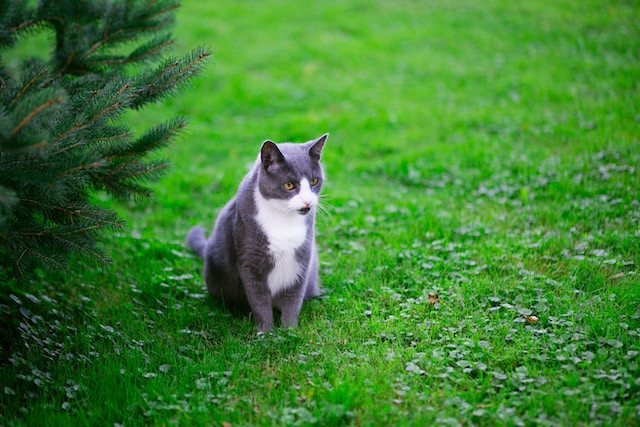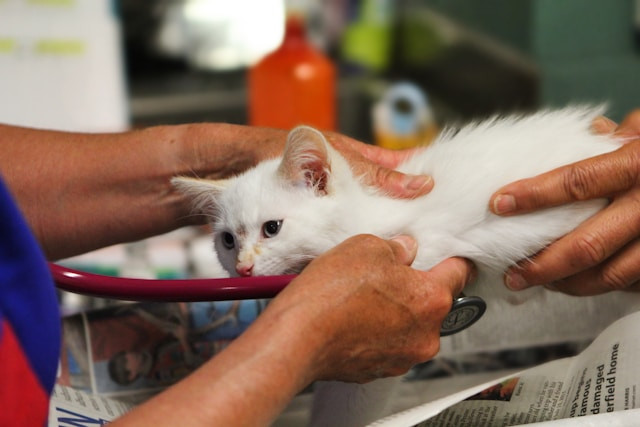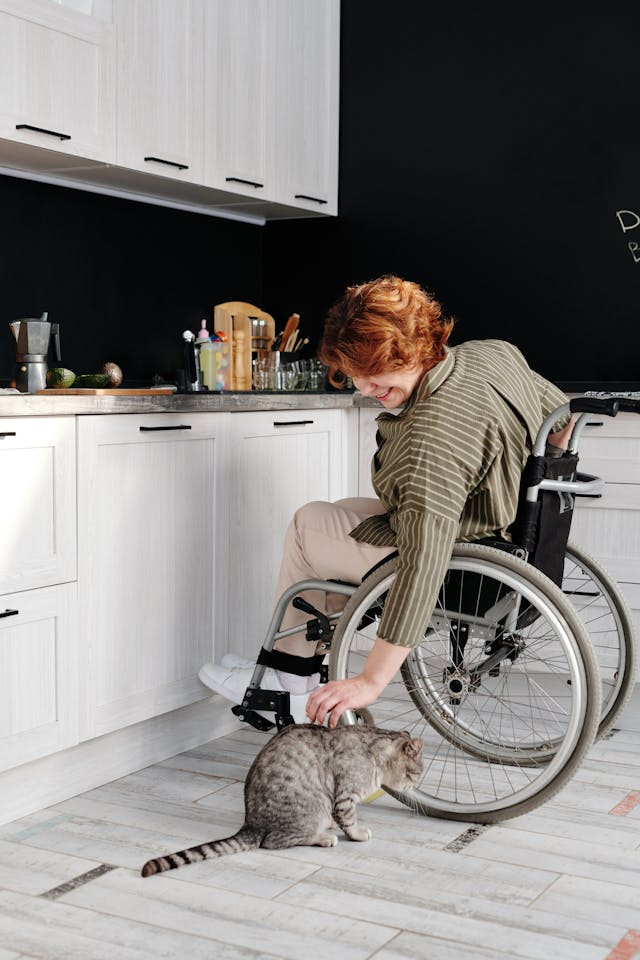As someone deeply invested in making life easier for cat parents, I’m always on the lookout for innovative pet products. From automatic feeders simplifying meal times to washable rugs tackling those inevitable messes, the market is brimming with gadgets promising to streamline cat care.
However, not every pet product, especially in the realm of pet tech, is designed with our feline friends’ best interests at heart. Some devices, like remote deterrents, can inadvertently create more problems than they solve. In my professional opinion, Self Cleaning Cat Litter boxes, at least in their current iterations, often fall into this category. While manufacturers tout the dream of never having to scoop litter again, they often gloss over the potential downsides that can impact your cat’s well-being and litter box habits.
The Unspoken Downsides of Self Cleaning Cat Litter Boxes
While there might be limited scenarios where a self-cleaning litter box seems like a viable solution (we’ll explore these later), for the vast majority of cats, they are far from ideal. The drawbacks frequently overshadow the perceived convenience, primarily benefiting humans rather than catering to the cat’s needs.
 A gray and white cat sits near a pine tree in a green grassy field.
A gray and white cat sits near a pine tree in a green grassy field.
Just hoping somebody will think of my needs… Photo by Kaiwen Sun.
Noise Sensitivity: A Frightening Factor for Cats
While the whirring and clicking of a self-cleaning mechanism might seem subtle to our ears, consider this: cats possess significantly more sensitive hearing than humans. This heightened auditory perception is why placing a litter box near noisy appliances is generally discouraged. The sudden activation of an appliance can startle a cat and create a negative association with the litter box, potentially leading to avoidance.
Robotic litter boxes, by their very nature, generate operational noise. This noise can be particularly alarming for cats, especially if the cleaning cycle initiates while they are nearby. Even if the cat isn’t inside the box during the cleaning process, the unexpected sounds can instill fear and anxiety, leading to litter box aversion. Unfortunately, I’ve witnessed this exact scenario unfold with numerous clients and their feline companions.
Accessibility Challenges: Boxes That Are Hard to Reach
Many self-cleaning litter box designs incorporate ramps or require cats to step down into an enclosed chamber. While seemingly minor to us, these design elements can present a significant obstacle for cats. Remember, cats are physically smaller than we are, making any vertical climb or descent more strenuous for them. As cats age, particularly senior cats, mobility can become an issue. Climbing in and out of a robotic litter box, even with a ramp, can become uncomfortable or even painful for cats with arthritis or other age-related ailments. Senior cats thrive with easily accessible litter boxes, and the ramp designs of many self-cleaning models often fall short.
Even younger, more agile cats might be deterred by the added effort required to access these boxes. Cats naturally gravitate towards the path of least resistance. Your floor, for instance, is always readily accessible. This is why I frequently encounter clients whose cats begin eliminating right outside the self-cleaning litter box – the floor simply becomes the more convenient option.
Limited Litter Choices: Restricting Cat Preferences
Self-cleaning litter boxes are engineered to function with specific types of litter that are compatible with their cleaning mechanisms. However, cats are known to have distinct preferences for certain litter textures, scents, and materials. By limiting litter options, you might inadvertently force your cat to use a litter type they dislike. This mismatch in preference can easily lead to litter box avoidance. Are you starting to see a pattern here? Many of the features designed for human convenience can inadvertently create problems for our feline companions.
Obscured Health Monitoring: Missing Vital Clues
While some high-tech robotic litter boxes boast health monitoring features, often these are functionalities that are easily achieved through simple observation and don’t justify the expense or potential downsides. Regular scooping of a traditional litter box provides a valuable opportunity to monitor your cat’s litter box habits. You can readily observe changes in urine and stool consistency, frequency, and appearance – all crucial indicators of your cat’s health. By automating this process, you risk missing out on vital health information that is readily available, and free, with manual scooping.
For example, blood in your cat’s urine, a potential sign of serious conditions like urinary tract infections or feline lower urinary tract disease (FLUTD), might go unnoticed in a self-cleaning system. Similarly, changes in stool odor, which could signal digestive issues or parasitic infections like giardia, might not be detected promptly. Trust me, firsthand experience has taught me the importance of paying attention to these subtle cues!
Superior Health Monitoring Methods
Despite marketing claims, self-cleaning litter boxes are not the optimal way to monitor your cat’s health. There are simpler, cat-friendlier, and more effective methods. As unglamorous as it may seem, directly observing your cat’s litter box habits and the characteristics of their urine and feces remains the gold standard for health monitoring at home.
 A cat
A cat
Regular vet visits are a better way to monitor your cat’s health. Photo by Judy Beth Morris.
If you’re truly interested in leveraging technology for health insights, consider a health monitoring platform specifically designed for regular litter boxes. These systems can track weight and urination patterns without introducing the aversive elements of self-cleaning mechanisms. Alternatively, a simple freestanding pet scale can effectively monitor weight fluctuations, a key indicator of overall health. The bottom line: self cleaning cat litter boxes are not the most effective or cat-centric way to stay informed about your cat’s well-being.
If you’re concerned about litter box usage frequency, simply positioning the litter box in a more visible location (which is generally recommended anyway) or setting up an affordable indoor camera with motion detection can provide the insights you need at a fraction of the cost. Brands like Eufy offer indoor cameras without monthly subscription fees, making it a budget-friendly and non-intrusive monitoring solution. Cats are generally unconcerned about being observed during their litter box visits, so privacy isn’t a concern for them.
Cat Conflict Escalation: Small Boxes, Big Problems
Many self-cleaning litter boxes prioritize compact designs to appeal to human sensibilities regarding space-saving convenience. However, cats inherently prefer larger litter boxes. This preference stems from their natural instinct to have ample space to eliminate comfortably and bury their waste. This is why DIY litter boxes, often crafted from large storage containers, are frequently recommended – they provide cats with the spaciousness they desire. The entrances to many self-cleaning boxes are often small and restrictive. Despite marketing claims suggesting suitability for multi-cat households, these boxes often fall short in practice.
 An unhappy cat in a self cleaning litter box with another cat out front
An unhappy cat in a self cleaning litter box with another cat out front
The cat outside the box might be seen as guarding the self scooping box by the cat using it. That’s not good! Photo by Nicholas Fu.
In multi-cat homes, especially those with existing cat conflict, self-cleaning litter boxes can exacerbate tension. The enclosed nature and limited space within these boxes can create a situation where one cat feels cornered or trapped by another cat approaching the box. This perceived vulnerability can trigger defensive behaviors, litter box avoidance, and even escalate into full-blown cat fights. Even if overt aggression isn’t present, simply another cat’s presence near the entrance can be interpreted as a threat, leading to stress and inappropriate elimination outside the box.
When Might a Self Cleaning Cat Litter Box Be Considered?
Despite my generally negative stance, I acknowledge that there are a couple of specific situations where a self cleaning cat litter box might be a somewhat reasonable, or at least acceptable, option. It’s crucial to reiterate that even in these scenarios, the current self-cleaning litter box technology available is far from perfect, especially when more cat-friendly and cost-effective alternatives exist. You’ll notice I’ve deliberately avoided mentioning specific brands of self-scooping litter boxes – this is because the fundamental design flaws are widespread across the market. And this article only scratches the surface of the potential problems associated with robotic litter boxes.
Exceptionally Cleanliness-Focused Cats
From a feline perspective, certain cats exhibit an extreme aversion to even the slightest hint of soiled litter. These ultra-fastidious felines might refuse to use a litter box that isn’t impeccably clean. In these very specific cases, a self-scooping litter box could be considered. However, before resorting to automation, explore more cat-centric solutions first. A Litter Genie, for example, can encourage more frequent manual scooping by making waste disposal quick and convenient. Adding a second litter box adjacent to the existing one can also provide a consistently clean alternative while giving you more time between scooping sessions. If these methods prove insufficient, then, and only then, might a self-cleaning box be cautiously explored – with the understanding of the potential drawbacks.
But even then, proceed with caution. If your cat is exhibiting litter box issues, don’t automatically assume a self-cleaning box is the answer. In my experience, litter box problems rarely stem from a cat’s desire for a self-cleaning system. More often than not, the issues either begin immediately after introducing a self-cleaning box or the cat stops using the litter box altogether after the switch.
Assisting Individuals with Disabilities
The other scenario where a self cleaning cat litter box can be a genuinely helpful tool is when a person’s disability significantly limits their ability to perform regular litter box cleaning. For individuals with mobility impairments, chronic pain, or other physical limitations that make scooping difficult or impossible, a self-scooping litter box can be life-changing. Everyone, regardless of physical ability, deserves to experience the joy of cat companionship, and if a less-than-ideal piece of pet tech can facilitate that, then I wholeheartedly support its use in these specific circumstances.
 A woman in a wheelchair pets a cat
A woman in a wheelchair pets a cat
Cats are for everyone. Photo by Marcus Aurelius.
However, even in these situations, be mindful of the potential for litter box aversion in your cat. Explore alternative assistive tools first. For individuals who struggle to bend over, a long-handled litter scoop can significantly reduce strain. There are also ergonomically designed scoops with flat blades and comfortable handles that can ease the physical demands of scooping.
For those with grip strength limitations due to pain or muscle weakness, various scoop modifications and alternative designs can be beneficial. Consider scoops with differently shaped handles, scoops with built-in waste containers, or temporary waste storage features. The key takeaway is that solutions beyond self cleaning cat litter boxes exist to meet both your cat’s needs and the needs of disabled cat owners.
Significant Room for Improvement in Self Cleaning Cat Litter Technology
Even in the limited situations where self-scooping litter boxes offer some advantages, the technology currently available still falls short, especially when more affordable and cat-friendly alternatives exist. Self cleaning cat litter boxes desperately need to be redesigned with both human convenience and feline well-being in mind. Otherwise, we risk creating products that cats actively avoid.
For most cat owners, I cannot recommend self cleaning cat litter boxes in their current form. However, I am always open to discussing potential improvements with pet product businesses in this sector. My challenge to companies manufacturing self-scooping litter boxes is this: create a better product – one that cats actually like! When a product costing hundreds of dollars is easily outperformed by a DIY litter box that cat owners can assemble for under $20, there’s clearly significant room for improvement.
For now, if you’re considering a robotic litter box, I advise you to reconsider. I’m always happy to help you find workarounds to any litter box challenges you’re facing, solutions that prioritize both your cat’s needs and your preferences in a balanced way.
Need Litter Box Help?
Set Up a Consultation

